Peking University, July 22, 2025: From imperial history to industrial innovation, the 2025 China Deep Dive Program offered students from top American universities an immersive journey into the heart of modern China.
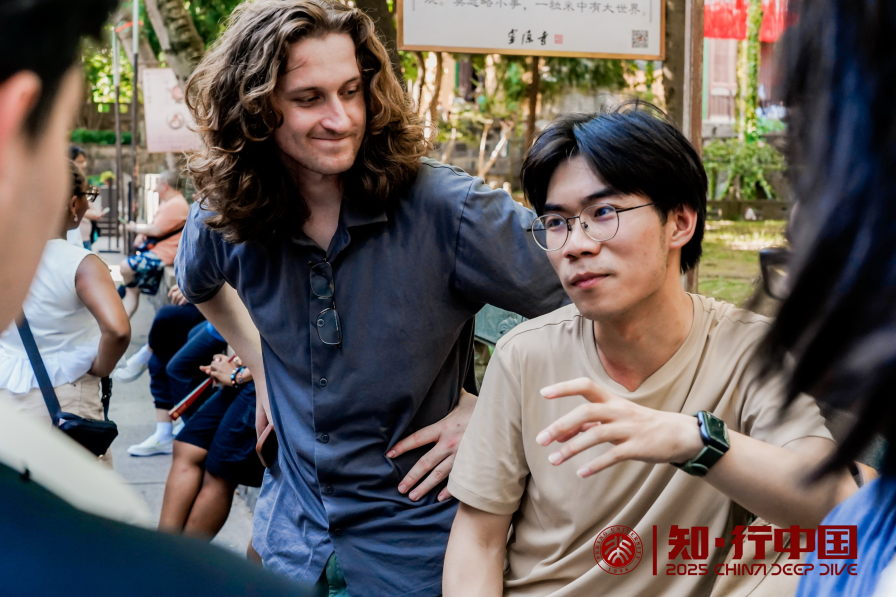
China and the U.S. students exchange ideas during the program
Jointly hosted by Peking University and key regional partners, the two-week program is part of a national initiative to invite 50,000 U.S. students to China over five years. This year’s East Route took students from Beijing to Suzhou, Hangzhou, and Shanghai, offering a diverse range of perspectives on this country, including economic development, technological innovation, rural revitalization, and cultural preservation.
To better prepare the students for this fully immersive experience, the program commenced with lectures from various domains at Peking University. Professor Fu Jun introduced his “field curvature” theory to explain China’s nonlinear economic growth. Students also explored Chinese philosophy’s notion of “unity of knowledge and action” and traced the evolution of the “Global South” concept.
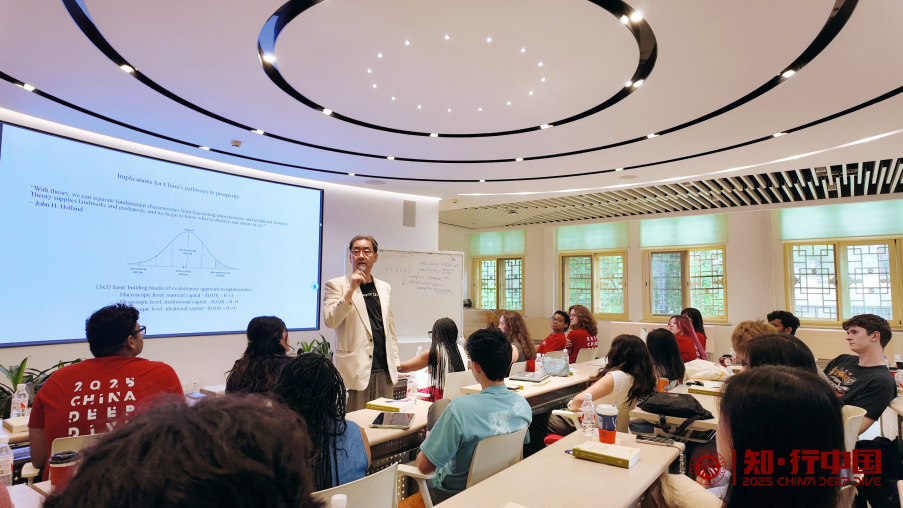
Professor Fu Jun delivers a lecture at Peking University
“I used to see Chinese people as numbers and graphs in the media,” said Sean Dorr from the University of California, Berkeley, in an interview with China Daily. “Now I’ve talked to them, humanized them. It feels much more real.”
Cultural highlights in Beijing included walking atop the Great Wall and touring the Forbidden City’s golden rooftops. A visit to China Railway Signal & Communication Corporation showcased the country’s cutting-edge infrastructure.
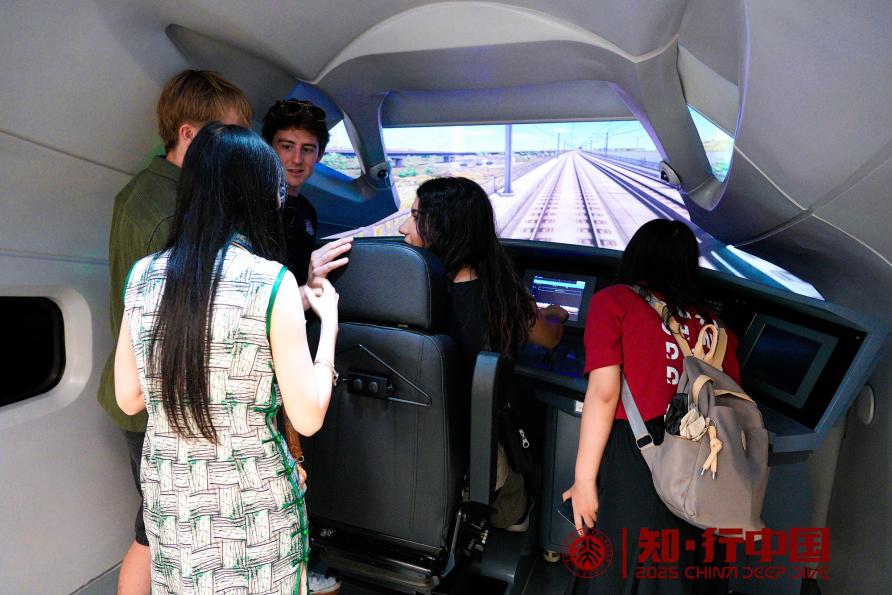
American students have a hands-on experience in a high-speed rail train simulator
“My favorite site was still the Palace Museum, a.k.a. the Forbidden City,” said Eamon Seeley from Notre Dame. “It’s where I could actually learn about Chinese history and culture, not just hear an American story.”
After a high-speed rail journey, the group arrived in Suzhou, the so-called “Venice of the East.” Students explored the 2,000-year-old city’s urban planning legacy and canal culture at the Urban Planning Exhibition Hall and Grand Canal Heritage Museum.
At Soochow University, Professor Xu Tao delivered a lecture on globalization and local trade policy. Students then visited high-tech companies like Nanomicro and Higer Bus in Suzhou Industrial Park, where they observed and operated the latest biotechnology equipment, engaged with interactive technology displays, and even experienced autonomous vehicles in the Suzhou CBD.
“I’ve heard about China’s tech for years,” said Shannon Lin from Cornell. “But seeing it up close was truly overwhelming.” To combine theoretical knowledge and bold industrial policies with in-person experience, the visit offered them a tangible sense of China’s progress in scientific innovation and economic development.
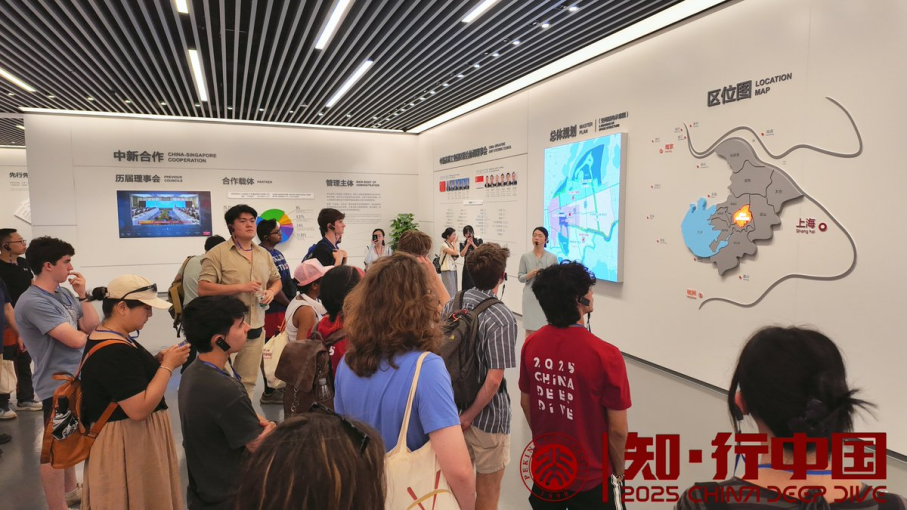
Suzhou Industrial Park presents the development of the city to the students
At the final stop, the architectural harmony of the Suzhou Museum and Humble Administrator’s Garden left a lasting impression on Hanna Schechter from Georgetown University, which she found to be “a perfect fusion of architecture, history, and aesthetics.”
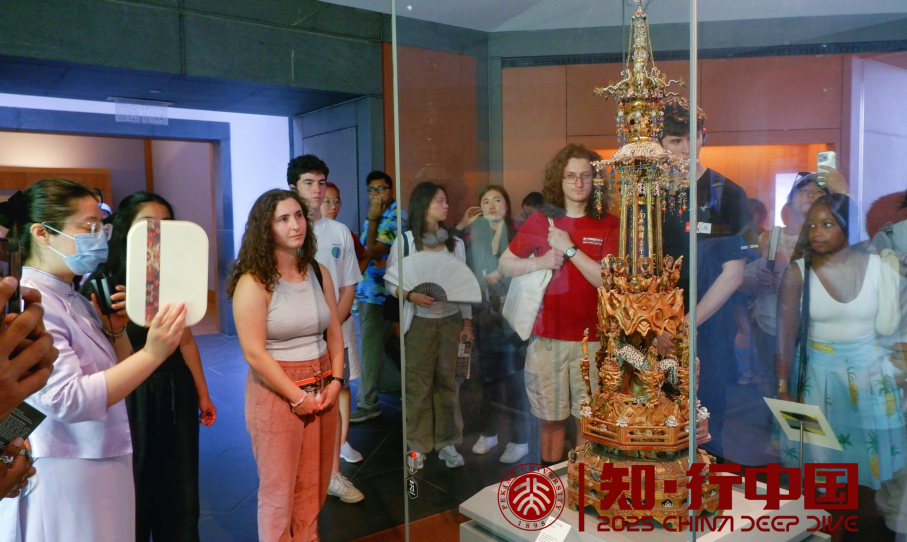
American students visit the Suzhou Museum
In Hangzhou, once praised by Marco Polo as “the finest and most splendid city in the world,” students strolled along the banks of West Lake and engaged in the traditional art of seal-rubbing at the Xiling Seal Art Society, each taking home a personalized fan stamped with a well-wishing seal.
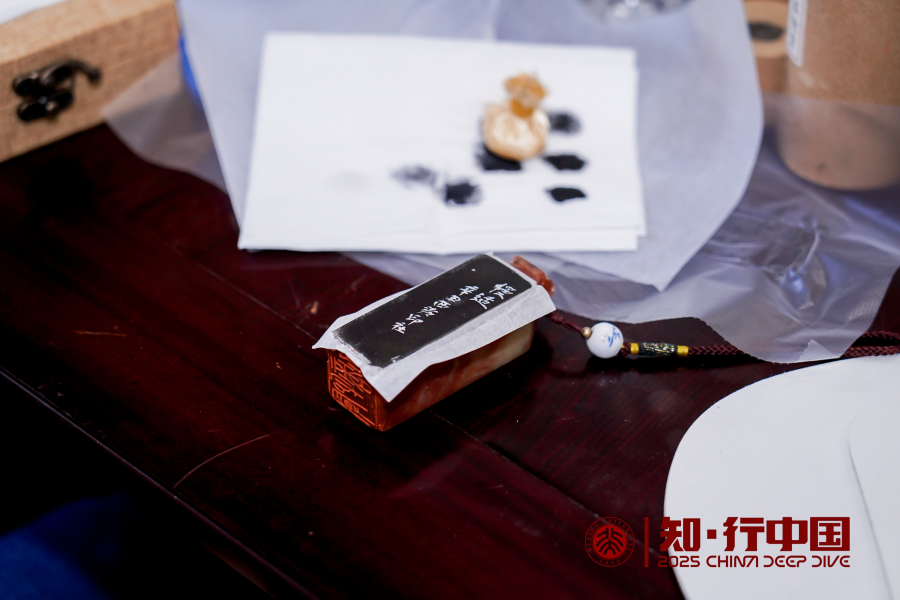
American students’ seal-rubbing experience
Hiking in the Longjing tea mountains and cooking a Sichuan dish at a smart kitchen facility by the Robam Future Factory offered hands-on glimpses into local life.
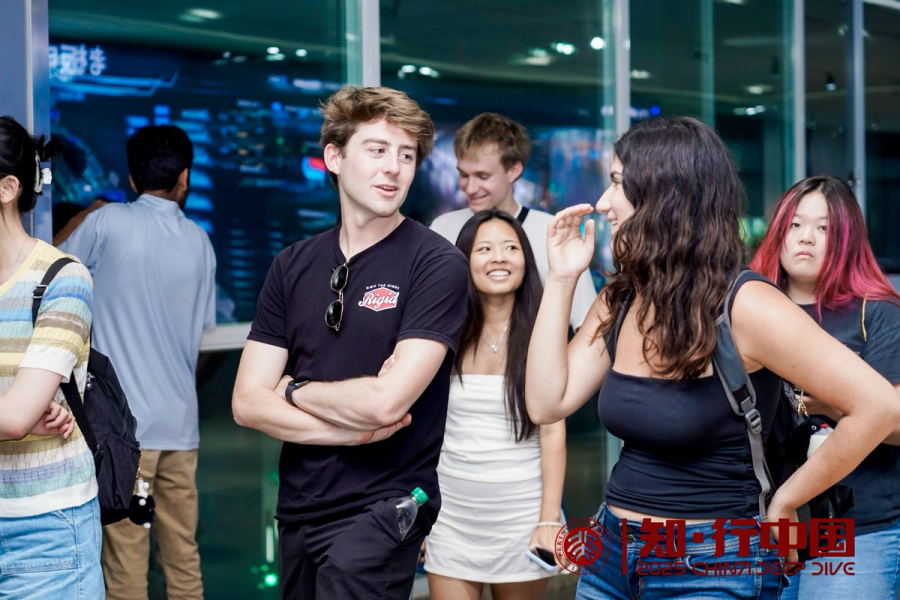
American students touring Robam Future Factory in Hangzhou
But it was Liangzhu Museum that struck a chord with Wang Xina also from Berkeley: “Standing on the ruins of a 5,000-year-old palace… That was truly moving.”
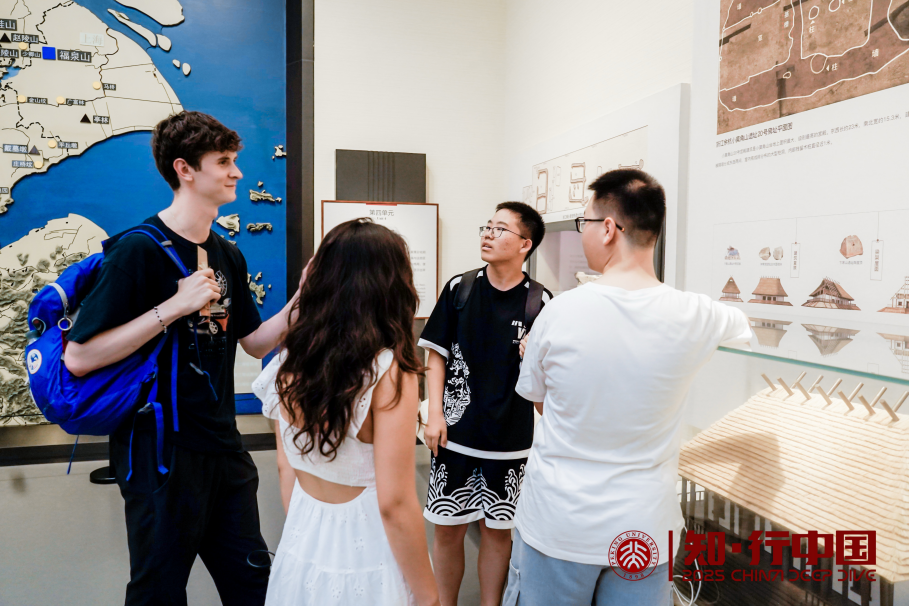
American students talking to local high school students at Liangzhu Museum
The group also visited Lingyin Temple, Hangzhou Fashion Center, and the Hangzhou Olympic Sports Center, before standing in the same hall where the world leaders of the G20 Summit once stood at the Hangzhou International Expo Center in 2016.
Naila Talib studied Global Governance at Berkeley, she said all those researches and writings about the G20’s events and impact made her feel magical and excited to truly stand in the venue and imagine herself being an official delegate or diplomat.
Meanwhile, Owen Norwalk, a mathematics major at Berkeley, found the car’s assembly process at the Geely car factory aligned with his interest in operations management; what others considered noise from stamping and welding was music to his ear. And, Dhrumil Kharva wore business casual specifically for this visit, saying that for someone deeply interested in EV investment, it felt like a dream come true.
The final chapter unfolded in Shanghai, where a closing lecture by Professor Zhang Ying from PKU Guanghua School of Management contextualized the students’ journey through the lens of development strategy and policy.
At Yum China’s flagship supply chain center, students toured automated frozen warehouses and explored the operations behind iconic brands like KFC and Pizza Hut. They also visited Shanghai Disney Resort, where VP of Public Affairs and Communications Murray King offered an insider’s view into cross-cultural brand storytelling.
From ancient palaces and calligraphy to self-driving cars and global retail logistics, the 2025 China Deep Dive Program East Route provided students with layered, nuanced insights into China—past, present, and future.
Written by: Zhang Yang
Edited by: Chen Shizhuo







